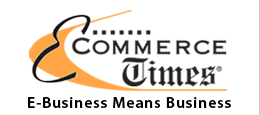Marketing Multi-Tenancy
Phil Wainwright has posted a terrific blog entry regarding the ‘green crystals’ that power Salesforce.com’s multi-tenant platform.
The concept of multi-tenancy has been a cornerstone of the Software-as-a-Service (SaaS) movement and a key element of the rapidly evolving cloud computing environment as well.
For anyone who is unfamiliar with the term ‘multi-tenancy’, it is borrowed from the housing market and aims to compare today’s leading SaaS/cloud computing vendors to condominium owners who can obtain more luxurious living quarters without the hassles of owning a single-family home by sharing a common infrastructure and operational services.
While this arrangement offers plenty of conveniences, it also requires some sacrifices when it comes to how far you can customize your particular unit, or version of software in the case of SaaS.
While the value proposition of multi-tenancy is easy to understand, it is hard to get a lot of details about how leading SaaS and cloud computing vendors are actually architecting their multi-tenant platforms to develop and deliver their solutions.
Phil’s blog provides valuable insight into Salesforce.com’s approach. But, what he doesn’t fully answer is the question why Salesforce.com is placing greater emphasis on its approach to multi-tenancy today.
I started to notice Marc Benioff and other company officials promoting their multi-tenant architecture prior to the launch of its Force.com Platform-as-a-Service (PaaS), and have watched this aspect of their well-choreographed marketing efforts become more prominent over the past year.
I think there are two primary reasons for Salesforce.com’s growing focus on the multi-tenant topic:
- The growing popularity of SaaS has attracted a proliferation of players, including legacy independent software vendors (LISVs) who are trying to enter the market with hosted versions of their single tenant applications. Salesforce.com is trying to fend off these late entrants by educating IT/business decision-makers about the benefits of multi-tenancy.
- Salesforce.com is also trying to convince various software vendors, start-ups as well as LISVs, that its Force.com PaaS capabilities are superior to the plethora of competing platforms in the market by revealing more about its ‘green crystals’. This is especially timely because Salesforce.com is accused by many of having a proprietary platform, rather than an open architecture like others.
Phil correctly suggests that it is essential for Salesforce.com to convince enterprise decision-makers of the unique qualities of its multi-tenant architecture. It is also imperative that Salesforce.com do the same for ISVs as it faces growing competition from PaaS offerings from Amazon, Google, IBM, Microsoft and others.




